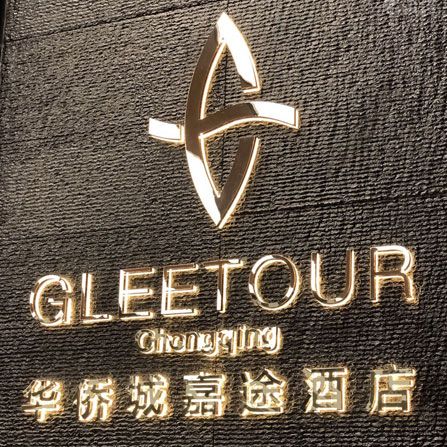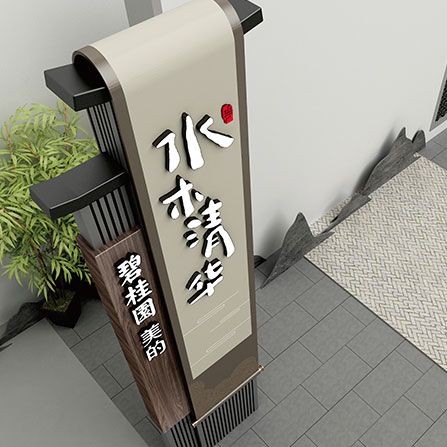Designing Effective Wayfinding Signage: A Focus on English Language Solutions
Introduction: The Power of Directional Signage
Ever walked into a mall or a museum and felt like you were in a maze? That's where directional signage comes into play. But what exactly is it, and why is it so crucial in our everyday lives? Let's dive into the world of directional signage design and find out why it's not just about pointing people in the right direction—it's about making their experience smoother, more enjoyable, and, let's face it, less frustrating.
What is Directional Signage?
Directional signage is like the GPS of the physical world. It's any sign that provides information about directions, locations, or points of interest. From simple arrows to complex maps, these signs help us navigate through buildings, cities, and even entire countries. But it's not just about the signs themselves; it's about the design behind them.
The Importance of Good Design
Think about it, have you ever seen a sign that was so confusing, you ended up walking in circles? Good directional signage design is essential for a few reasons:
Navigation Efficiency: Clear signs make it easier for people to find what they're looking for, reducing frustration and saving time.
Branding: Consistent and well-designed signage can enhance the brand image of a business or organization.
Accessibility: Proper signage ensures that everyone, including those with disabilities, can navigate the space effectively.
Key Elements of Effective Directional Signage Design
So, what makes a good directional signage design? Here are some key elements to consider:
Clarity: The message should be clear and easy to understand at a glance. Avoid using jargon or overly complex language.
Consistency: Use a consistent style, color scheme, and font throughout the signage system to create a cohesive look.
Visibility: Ensure that the signs are large enough to be seen from a distance and are placed in prominent locations.
Legibility: Choose fonts and colors that are easy to read, even in low-light conditions.
Accessibility: Include tactile elements for those with visual impairments and ensure that signs are placed at appropriate heights.
Types of Directional Signage
There are various types of directional signage, each serving a specific purpose:
Wayfinding Signs: These signs help people navigate through a specific area, such as a mall or airport.
Directional Maps: Maps provide a visual representation of the area, showing key locations and routes.
Informational Signs: These signs provide additional information about a location, such as hours of operation or event details.
Branding Signs: These signs are designed to promote a brand or business, often featuring a logo or tagline.
Designing for Different Environments
Directional signage design varies depending on the environment. Here are some considerations for different settings:
Outdoor Environments: Outdoor signs need to withstand harsh weather conditions and be visible from a distance. Use durable materials and reflective surfaces.
Indoor Environments: Indoor signs should be easy to read and blend with the interior design. Consider the lighting conditions and the height at which the signs will be viewed.
Public Spaces: Public spaces require signs that are accessible to everyone, including those with disabilities. Use tactile elements and clear, concise language.

圖片由人和時代CRT標識設計集團提供
The Role of Technology
Technology has revolutionized the way we design directional signage. Here are some innovative technologies to consider:
Interactive Maps: Digital maps can be accessed via smartphones or kiosks, providing real-time information and updates.
Augmented Reality (AR): AR can be used to overlay digital information onto physical spaces, enhancing the wayfinding experience.
Bluetooth Beacons: These devices can send location-based notifications to smartphones, guiding users to their destinations.
Case Studies: Successful Directional Signage Designs
Let's take a look at some successful directional signage designs from around the world:
New York City Subway: The NYC subway system is renowned for its clear and easy-to-read signage, which helps millions of riders navigate the complex network daily.
Apple Stores: Apple's minimalist and sleek signage design creates a consistent brand experience across all stores worldwide.
Heathrow Airport: Heathrow's signage system is a masterpiece of wayfinding, guiding travelers through the airport with ease.
Conclusion: The Future of Directional Signage
As technology continues to evolve, so will directional signage design. The future will likely see more integration of digital and physical signage, creating a seamless wayfinding experience. But one thing remains constant: the importance of clear, effective, and accessible directional signage. So, the next time you're designing or updating your signage, remember that it's not just about pointing people in the right direction—it's about enhancing their experience and making their lives a little easier.

人和時代設計
品牌設計、VI設計、標識設計公司
標識導視資料百科
Signage Information Encyclopedia
優化醫院導視系統設計 提升患者導覽體驗與就醫效率提案2025/05/12
央美視覺設計導師 揭秘藝術與設計的靈魂引路人2025/05/12
車場導視設計 打造高效便捷的停車導航體驗2025/05/12
品牌導視設計 引領視覺識別的導航理念2025/05/12
導視系統設計研究 參考文獻綜述與趨勢分析2025/05/12
Designing Effective Wayfinding Systems: A Focus on Signage and Navigation2025/05/12
文藝風導視系統 藝術與科技的視覺交響2025/05/12
導視設計優化指南 提升空間指引體驗的關鍵要素2025/05/12
北京停車場導視系統設計 引領便捷出行新體驗2025/05/12



















